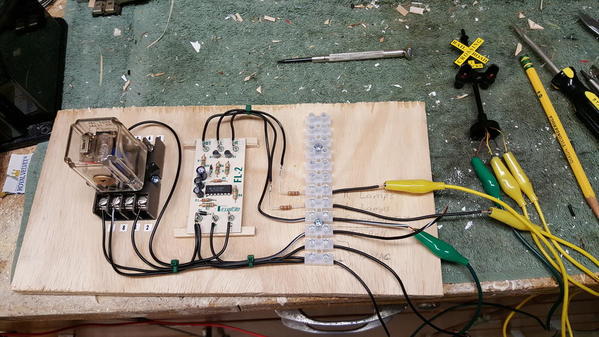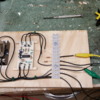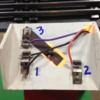UPDATE: Ok, I have had partial success. This is after countless hours of reviewing the Lionel video on wiring the gateman, downloaded wiring diagrams, and numerous threads on this forum and others. Thanks for all the suggestions and help. Here's what I have been able to complete with two separate gatemen linked with adjacent accessories (crossing gate and RR crossing lights):
Gateman 1: Gateman light stays on all the time, even when gateman triggered. Gateman and adjacent accessories triggered by insulated rail. All on same circuit. Here's a photo of this set up (FYI, black is ground, violet is power, and orange goes to insulated rail; accessories get violet and orange wires):

Gateman 2: Gateman light on, but goes off when gateman and accessories activated. Triggered by insulated rail, but also includes the 30100 unit to prevent contact bounce. Gateman and accessories on circuit different from 30100 (separate transformers and they are in phase).
I can accept the above operations, but here is my ideal goal:
Gateman light stays on all the time, even when gateman activated. Accessories activated with gateman. Accessories and gateman on same circuit, but light on separate circuit. This permits me to link gateman light with all other lights on layout, and adjust voltage separately as needed for lights and gateman.
I was able to figure out the wiring and achieve the functions in my ideal goal, but the triggering mechanism was the 153C contactor. Can't figure out how to do this with the insulated rail, and particularly with the 30100 unit. What frustrates me the most, is that this is not rocket science and I should be able to figure this out! Sorry if this is a dumb request, but any help here is appreciated.
Thanks,
Michael












